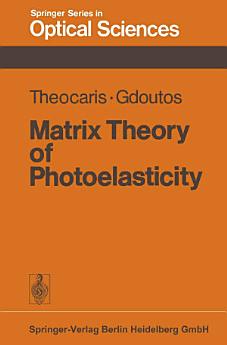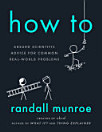Matrix Theory of Photoelasticity
juny del 2013 · Springer Series in Optical Sciences Llibre 11 · Springer
Llibre electrònic
354
Pàgines
reportNo es verifiquen les puntuacions ni les ressenyes Més informació
Sobre aquest llibre
Photoelasticity as an experimental method for analyzing stress fields in mechanics was developed in the early thirties by the pioneering works of Mesnager in France and Coker and Filon in England. Almost concurrently, Föppl, Mesmer, and Oppel in Germany contributed significantly to what turned out to be an amazing development. Indeed, in the fifties and sixties a tremendous number of scientific papers and monographs appeared, all over the world, dealing with various aspects of the method and its applications in experimental stress analysis. All of these contributions were based on the so-called Neumann-Maxwell stress-opticallaw; they were developed by means of the classical methods of vector analysis and analytic geometry, using the conventionallight-vector concept. This way of treating problems of mechanics by photoelasticity indicated many shortcomings and drawbacks of this classical method, especially when three-dimensional problems of elasticity had to be treated and when complicated load and geometry situations existed. Meanwhile, the idea of using the Poincare sphere for representing any polarization profile in photoelastic applications was introduced by Robert in France and Aben in the USSR, in order to deal with problems of polarization oflight passing through aseries of optical elements (retarders andjor rotators). Although the Poincare-sphere presentation of any polarization profile con stitutes a powerful and elegant method, it exhibits the difficulty of requiring manipulations in three-dimensional space, on the surface of the unit sphere. However, other graphical methods have been developed to bypass this difficulty.
Puntua aquest llibre electrònic
Dona'ns la teva opinió.
Informació de lectura
Telèfons intel·ligents i tauletes
Instal·la l'aplicació Google Play Llibres per a Android i per a iPad i iPhone. Aquesta aplicació se sincronitza automàticament amb el compte i et permet llegir llibres en línia o sense connexió a qualsevol lloc.
Ordinadors portàtils i ordinadors de taula
Pots escoltar els audiollibres que has comprat a Google Play amb el navegador web de l'ordinador.
Lectors de llibres electrònics i altres dispositius
Per llegir en dispositius de tinta electrònica, com ara lectors de llibres electrònics Kobo, hauràs de baixar un fitxer i transferir-lo al dispositiu. Segueix les instruccions detallades del Centre d'ajuda per transferir els fitxers a lectors de llibres electrònics compatibles.










